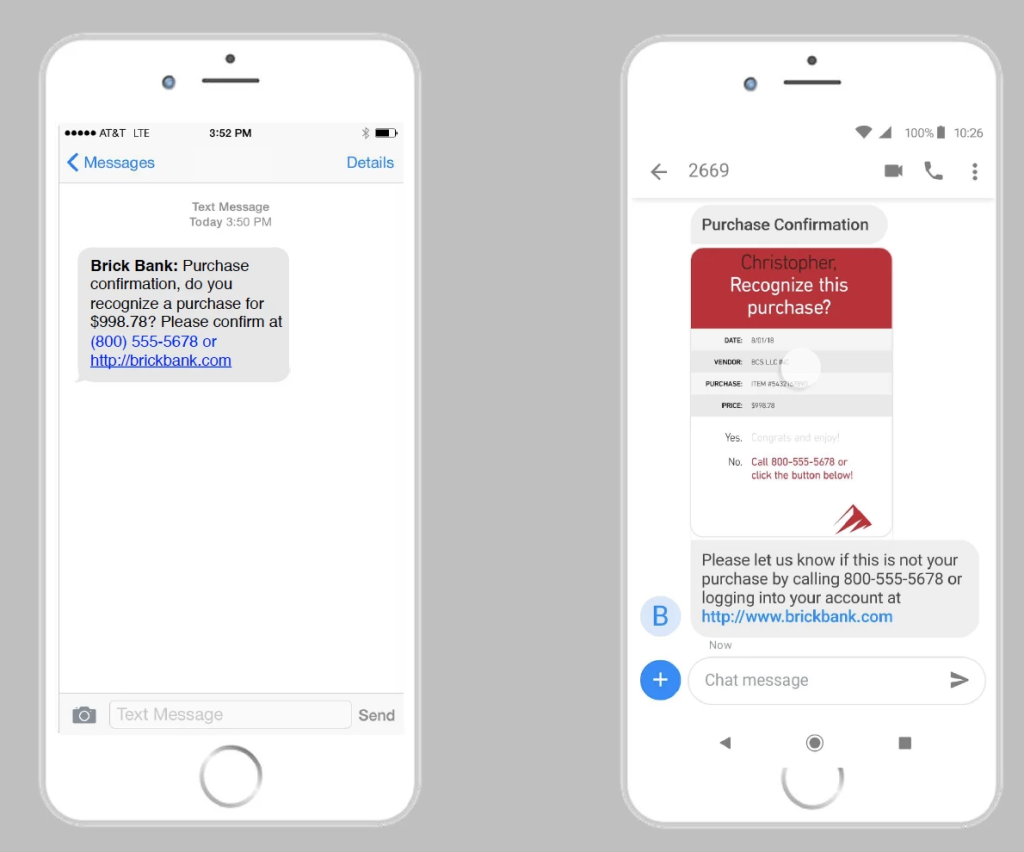Insights
SMS vs MMS: Key differences and when to use each

Insights

You send texts every day without a second thought, but when businesses send texts, every word, image, and timing choice matters. Some messages grab attention instantly, while others seem to be completely ignored.
Ever wondered why some business messages come packed with images, logos, or videos, while others stick to simple text? That’s the key difference between SMS and MMS, and understanding when to use each can make or break your marketing strategy.
In this guide, we’ll break down the essential differences between SMS and MMS messaging. You’ll learn when to use each format to maximize engagement, control costs, and drive better results. By the end, you’ll have a clear roadmap for using SMS and MMS to strengthen your marketing campaigns, boost customer engagement, and achieve your business goals.
Whether you’re sending quick alerts or designing rich, eye-catching promotions, this guide will help you choose the right messaging format for every scenario.
SMS (Short Message Service) is the standard format for text messaging that lets you send text-only messages that are up to 160 characters long. These bite-sized communications travel through mobile networks and work on virtually any cell phone, regardless of model or operating system. When people think of text messaging, they typically think of SMS – direct, concise messages that include written text characters, and can also include links to websites.
You can use SMS for:
While SMS lacks multimedia content, its simplicity is its strength. Messages send instantly, work on any device, and don’t require internet access, making them ideal for urgent updates and transactional alerts.
Here’s a quick breakdown of the advantages and disadvantages of implementing SMS campaigns for marketing.
| Pros | Cons |
| It’s great for simple, quick-to-read messages | It doesn’t support images, videos, or rich media |
| It works on all devices, no internet needed | The 160-character limit restricts message length |
| It’s cost-effective, with low investment | There’s minimal personalization beyond text |
| It’s easy to automate and schedule | It’s less engaging compared to multimedia messages |
| It has high deliverability rates | The ability to convey complex information is limited |
MMS (Multimedia Messaging Service) lets you send images, videos, GIFs, audio clips, and emojis in addition to longer text messages (up to 1,600 characters).
From a marketing perspective, MMS allows you to turn static text messages into dynamic, engaging content. This rich media format is great for campaigns where visual impact matters – here’s when it makes the most impact:
There are some clear pros and cons of MMS marketing. Here are a few of them:
| Pros | Cons |
| It’s versatile, supporting images, videos, GIFs, and audio | It’s more expensive than SMS for marketing campaigns |
| It’s visually engaging and stands out from text-only messages | It’s not universally supported on all devices |
| It’s better for showcasing products and promotions | It’s more complex to create and design effectively |
| It has higher attention and customer engagement rates | It may require a specific phone plan |
While SMS restricts your messages to written characters and links, MMS allows you to send videos or audio files. And you can include up to 1600 characters – ten times as many as the 160-character limit for SMS.
The main difference between SMS and MMS is MMS’ versatility. With MMS, you can do much more, like sending longer messages, or sending messages that better capture and keep peoples’ attention.
Additionally, MMS usually costs more to use because you’re sending much higher quantities of data over carrier networks. That’s why, even if you love the versatility and higher capacity of MMS, you’ll probably always use SMS messages for some of your text marketing. Some messages can be expressed very well in under 160 characters, and in those situations, SMS will do just fine.
Can you spot the differences between MMS and SMS? Here’s a quick image that shows them side-by-side:

Let’s break down the key differences between these messaging formats to help you decide which one best suits your communication needs:
| Feature | SMS | MMS |
| Short for | Short Message Service | Multimedia Messaging Service |
| Supported media | Text and links only | Images, videos, audio, emojis, GIFs, and text |
| Reach | Universal; works on all phones | Most modern phones in supported markets |
| Character limit | 160 characters | Up to 1,600 characters |
| Price | Lower cost | Higher cost due to data usage |
| Best for | Quick updates, alerts, reminders | Visual promotions, detailed messages, product launches |
Yes, SMS/MMS and over-the-top (OTT) messaging apps like iMessage and WhatsApp work differently.
SMS and MMS rely on cellular network infrastructure through your carrier’s service, whereas OTT messaging works through a Wi-Fi connection or a provider’s cellular network. So, if you don’t have Wi-Fi or a data plan, OTT messages won’t work on your phone. For this reason, SMS and MMS are typically more universal in reach.
For marketers, though, SMS and MMS have more limited formatting options and fees are incurred for every message sent. OTT apps offer a more diverse range of multimedia opportunities and may have more predictable, campaign-based costs.
In sum, OTT apps offer richer features but create “walled gardens.” This means you can only reach people using the same app and an internet connection. SMS and MMS can work on nearly any phone in supported markets without Wi-Fi or data, making them the most reliable way to reach people instantly.
SMS, MMS, and Rich Communication Services (RCS) are all messaging channels that deliver messages straight to a user’s native mobile inbox. But the way they’re sent and what they can include varies.
SMS is the most basic, sending short, text-only messages over mobile networks. MMS builds on that by allowing images, videos, and other media, making messages more engaging while still working on almost any mobile phone in supported markets provided the recipient has an MMS messaging plan. It’s reliable, widely supported, and ensures your visual messages reach a broad audience even in places where data or internet connection is limited.
And RCS messaging takes things even further than MMS, delivering high-quality visuals, interactive buttons, maps, carousels, and branded, verified messages – but it requires an internet connection. While RCS is compatible with Android, it’s gaining traction with Apple adding support on iPhones with RCS in iOS 18. That means that SMS and MMS remain essential for broad, reliable reach.
SMS is best for fast, reliable messages where visuals aren’t needed. Once you choose the right SMS provider, you can get started quickly. SMS also makes sense when working with strict budgets or communicating with audiences in areas with limited data coverage.
Here are some examples of SMS:
Looking for creative ways to implement SMS into your text marketing strategy? Our SMS marketing guide provides SMS templates, compliance tips, and industry-specific examples to help you maximize engagement while maintaining regulatory compliance.
Pro tip: The best text messaging marketing happens when your messaging platform is connected to the rest of your data. This allows you to send automated and triggered messages, as well as personalized and segment texts. To do this, you’ll need an SMS API for integration.
MMS is best for visual storytelling or longer messages. While more expensive than SMS, MMS typically delivers higher engagement rates that can justify the additional cost.
Use cases for MMS include:
Pro tip: Want better MMS results? Check our guide for tips, strategies, and examples.
The most effective messaging strategies don’t rely on just SMS or MMS — they use both to maximize engagement. SMS is perfect for quick, concise updates that reach everyone, while MMS adds visual power when you need to showcase products, share promotions, or tell a more compelling story. Together, they create a balanced approach that keeps your audience informed, engaged, and inspired to act.
But why stop there? Integrating SMS and MMS into a broader omnichannel strategy allows you to connect with customers on their preferred platforms, creating seamless and personalized experiences across every touchpoint.
Ready to take your messaging strategy to the next level? Download our Ultimate guide to conversational messaging channels for expert tips, practical examples, and ready-to-use templates to help you make the most of SMS, MMS, and beyond.